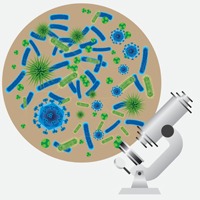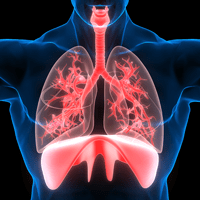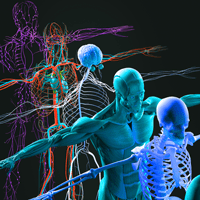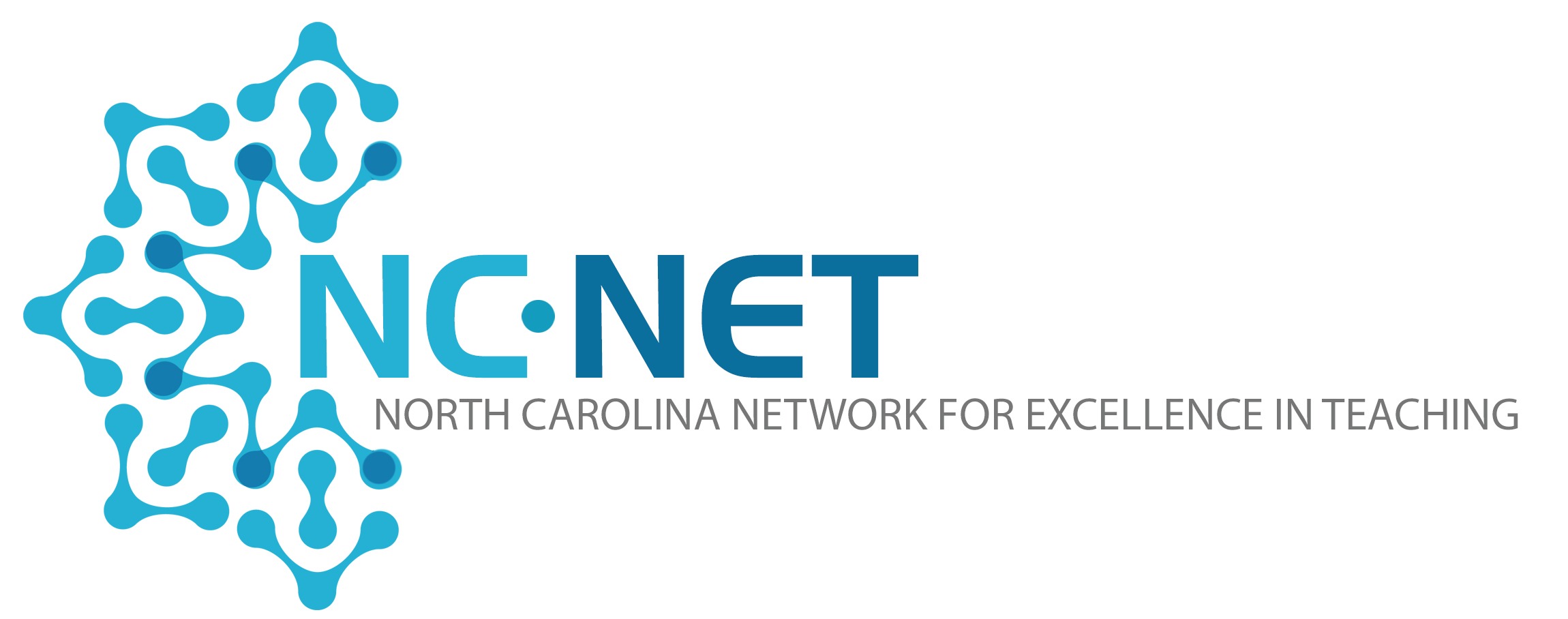Instructional Resources
NC Instructor-Developed Materials
About the Series:
The following instructional lessons were developed by faculty as part of the NC-NET Academy’s Curriculum Development for Integrated Instruction series of online professional development courses. Interdisciplinary teams collaborated to develop classroom-ready materials that:
- integrate career and technical content and academic concepts—reinforcing both,
- use real-world scenarios to engage students and make content relevant,
- foster critical thinking, collaboration, and other skills valued by employers, and
- encourage instructors to use active, authentic assessment techniques.
Access the lessons below:
Think About What You Are Thinking About – What’s in My Portfolio?
Created by: Marion Pope, Sampson Community College
Project Description:
In this project, students will create a digital portfolio to prove mastery of certain digital skills in the EDU271 Educational Technology course. This portfolio will be based on 21st-century educational job searches. Students will be presented with different tools aid in portfolio creation. Students will also use presentation software such as Google Sites, Microsoft Office 365, zoom, word processing software, and multimedia authoring software ( audio, video, and podcasting tools).
Estimated Duration:
Two weeks
Appropriate Course(s) for Implementation:
- ART111 Art Appreciation
- EDU261 Early Childhood Admin I
- EDU262 Early Childhood Admin II
- EDU271 Educational Technology
- EDU284 Early Childhood Capstone Prac.
- COM120
- Any courses using portfolios
Files for Instructors:
Begin by downloading the Project Template (first file below). It provides the project overview and references the use of all the other required files, provided below.
What Is Malware?
Created by: Jackie Allen, Rowan–Cabarrus Community College
Project Description:
Students will work in groups to create a presentation to advise community college faculty and students about the risks of Malware.
Estimated Duration:
5 hours
Appropriate Course(s) for Implementation:
- CIS110
- ENG111
- COM110
- COM120
Files for Instructors:
Begin by downloading the Project Template (first file below). It provides the project overview and references the use of all the other required files, provided below.
Professional Development for Career Success
Created by: Lisa Wilcox, Caldwell Community College and Technical Institute
Project Description:
This lesson is designed to help prepare students for a professional job interview, by guiding students in the preparation of a personal biography, resume and portfolio. Students will also gain skills in public speaking and public presentation. After completing this lesson, students will be able to showcase their skills, abilities, strengths, and interest to potential employers.
Estimated Duration:
1.5-hour class time, (one day a week, approximately 4-6 weeks)
Appropriate Course(s) for Implementation:
- MED 264
- Any Program of Study
Files for Instructors:
Begin by downloading the Project Template (first file below). It provides the project overview and references the use of all the other required files, provided below.
Teaching Powder Volume to Ten-Year-Olds
Created by: Tammie Davis, Durham Technical Community College
Project Description:
The purpose of this lesson is for learners to understand and become proficient with powder volume calculations and how they relate to dosing accuracy. Community service is a core value of many programs. An objective of this lesson is for students to understand powder volume concepts and calculations well enough to create and present a lesson that younger students could understand.
Estimated Duration:
Three hours/One to two lab sessions depending on length
Appropriate Course(s) for Implementation:
- Pharmacy Technology
- Chemistry
Files for Instructors:
Begin by downloading the Project Template (first file below). It provides the project overview and references the use of all the other required files, provided below.
From Start To Finish
Created by: Jennifer Barfield, Southwestern Community College
Project Description:
The purpose of this lesson is to guide students through the process of obtaining employment in their desired field from finding job openings to following up after the interview. Students will complete professional documents and practice interview skills that they can take with them when entering the job market.
Estimated Duration:
Approximately 4 weeks
Appropriate Course(s) for Implementation:
- BUS-260 (Business Communication
- OST-286 (Professional Development)
- OST-289 (Office Administration Capstone)
- BUS-110 (Introduction to Business)
Files for Instructors:
Begin by downloading the Project Template (first file below). It provides the project overview and references the use of all the other required files, provided below.
It’s All Negative: A Case Study in Antibiotic Resistance
Created by: Shirley Foley, Rowan-Cabarrus Community College
Project Description:
This project is an interrupted case study introducing the CRE (Carbapenem Resistant Enterobacterales), a group of Gram negatives resistant to the carbapenem drugs and often other antibiotics as well. Students will use information learned from multiple units in the same course to solve a case study and to determine the best treatment for a patient using a case-based scenario.
Estimated Duration:
1.5-2 hours, or approximately 2 lab periods
Appropriate Course(s) for Implementation:
- Bio 175
- Bio 275
- Bio 250
Files for Instructors:
Begin by downloading the Project Template (first file below). It provides the project overview and references the use of all the other required files, provided below.
Show Me How To Solve It!
Created by: Monique Taylor, South Piedmont Community College
Project Description:
Students will finding probability of a Binomial problem using the formula and technology. Students will analyze the results from Range Rule given and probability calculations to determine significance. Four content-specific scenarios have been created to provide unique contexts (Biology, Criminal Justice, Sociology, Political Science).
Estimated Duration:
One class session.
Appropriate Course(s) for Implementation:
- MAT 152 Statistics
Files for Instructors:
Begin by downloading the Project Template (first file below). It provides the project overview and references the use of all the other required files, provided below.
Crossing the Finish Line: Understanding Motivation and Personal Accountability in order to Remove Barriers to Success
Created by: Morgan Peterson, Rockingham Community College
Project Description:
The purpose of this lesson is for students to reflect on time management and successful habits that will help them achieve their goals not only at the community college, but in future endeavors such as transferring to a 4-year institution and the workplace. Students will be challenged to create a plan of action in order to consistently reach their goals. Students will participate in group discussions, research, readings, and a culminating project that will aim to create new habits.
Estimated Duration:
4 Class Sessions- 1 Hour Each.
Appropriate Course(s) for Implementation:
- ACA 122
Files for Instructors:
Begin by downloading the Project Template (first file below). It provides the project overview and references the use of all the other required files, provided below.
Home and Safety Assessments: How Accessible is Your Home?
Created by: Summer Corbin, Cape Fear Community College
Project Description:
The purpose of this assignment is to provide OTA students with the real-life experiences of selecting an appropriate home safety assessment to be utilized to determine the accessibility of the kitchen or restroom of a community dwelling individual.
Estimated Duration:
This project is to be completed as the hybrid component of this course and should take approximately 3 hours for thorough completion.
Appropriate Course(s) for Implementation:
- OTA 130 Assessment Skills
Files for Instructors:
Begin by downloading the Project Template (first file below). It provides the project overview and references the use of all the other required files, provided below.
“It Still Looks Brassy” – How Visible Light and Environmental Factors Impact Color Formulation
Created by: Heather Britt, Stanly Community College
Project Description:
This project guides students to explore the various ways color is perceived by the human eye, and how this impacts communication with clients. Students will practice how to consult with clients when preparing for color correction services, and will discuss factors that cause discoloration of the hair or influence end results that may not have turned out “as planned”.
Estimated Duration:
Estimated Duration:
Approximately six hours.
Appropriate Course(s) for Implementation:
- Contemporary Hair Coloring
- Cosmetology Concepts III
- Salon II & III
Files for Instructors:
Begin by downloading the Project Template (first file below). It provides the project overview and references the use of all the other required files, provided below.
Severe Stomach Pain – Communicating A Medical Emergency
Created by: Laura Price, Durham Technical Community College

Project Description:
This project immerses students in authentic scenarios that will allow them to practice tasks they may have to do as interpreters in the medical field. Students will be provided with real-world opportunities to enhance skills of consecutive interpreting, through practice in increasingly complex situations representing ER scenario simulations.
Estimated Duration:
Approximately two to three hours.
Appropriate Course(s) for Implementation:
- SPI 221
- SPI 222
- SPI 243
Files for Instructors:
Begin by downloading the Project Template (first file below). It provides the project overview and references the use of all the other required files, provided below.
How Many Bacteria Are On The Contaminated Lettuce?
Created by: Sky Reece, Ph.D., Beaufort Community College

Project Description:
Scientists in the food industry constantly conduct different microbiological experiments to ensure foods are safe for consumers. One of the crucial experiments is to quantify the microbe present in foods. This project uses an integrated approach to teach students the practical application of mathematics in the biology field; preparing students for mathematical skills in higher-level science courses or in biotech field jobs.
Estimated Duration:
Three hours.
Appropriate Course(s) for Implementation:
- Microbiology
- General Biology
- Biotechnology
- Pre-Calculus Algebra
Files for Instructors:
Begin by downloading the Project Template (first file below). It provides the project overview and references the use of all the other required files, provided below.
A Blast from the Past: Using Computer Analysis to Find a Deadly Microbe
Created by: Patricia Williams and Shaun Williams, Cleveland Community College

Project Description:
Through the scenario of an archeological dig team who falls mysteriously ill after working at a dig site, students play the role of scientists and agents from the Center for Disease Control who come to investigate what caused the illnesses. Students will develop data collection and information processing skills in the context of DNA analysis and bioinformatics.
Estimated Duration:
Approximately two 50 minute class periods or one 2-3 hour laboratory class.
Appropriate Course(s) for Implementation:
- BIO-111 (General Biology 1)
- BIO-275 (Microbiology)
- BIO-280 (Biotechnology)
- BIO-250 (Genetics)
- BTC-270 (Recombinant DNA Techniques)
- CIS-110 (Introduction to Computers)
- DBA-110 (Database Concepts)
Files for Instructors:
The materials to implement this project are self-contained within a single Microsoft Word file. Download "A Blast from the Past: Using Computer Analysis to Find a Deadly Microbe"
Electromagnetism and the Toilet Paper Roll DC Electric Motor
Created by: Russ Jones and Mike Daub, Surry Community College

Project Description:
This project is developed around an industry scenario to engage students in the roles of a team of electronics engineer technicians tasked with repairing or replacing a failing motor. Students will apply the physical principles of electromagnetism toward building a working DC electric motor.
Estimated Duration:
Six hours of lab divided into two sessions.
Appropriate Course(s) for Implementation:
- ELC 131
- Circuit Analysis I
- PHY 152
- College Physics II
Files for Instructors:
Begin by downloading the Integrated Project Template (first file below). It provides the project overview and references the use of all the other required files, provided below.
- Integrated Project Template.docx
- Simple DC Motor Lab Instructor Guide.docx
- Simple DC Motor Lab Student Guide.docx
- Essential Project Elements.docx
- Faculty Background Material.docx
- Student Reading Material.docx
- Simple DC Motor Lab Achievement Certificate Template.docx
- Activity Assessment Tool.docx
- Video of Simple Motor.mov
A Chest X-Ray is Equal to 10 Days of Natural Radiation: Is Radiation Bad?
Created by: Rebecca Berger, Cape Fear Community College
Project Description:
In this project, students will make connections between biological responses, radiosensitivity among different organs, and implementation of safe exposure practices to minimize radiation dose to the patient.
Estimated Duration:
Approximately three class periods.
Appropriate Course(s) for Implementation:
- RAD 111/112 (Procedures 1 and 2)
- RAD 241 (Radiobiology)
- Anatomy and Physiology (BIO 163, 168, 169)
Files for Instructors:
Begin by downloading the Project Template (first file below). It provides the project overview and references the use of all the other required files, provided below.
- Is Radiation Bad - Project Template
- Project Activity Instructions for Faculty
- Instructions for Students
- BERT Worksheet
- Calculation Worksheet for Tissue Sensitivity
- Calculation Worksheet for Tissue Sensitivity Answer Key
- Cellular Replication and the Law of Bergonie and Tribondeau Worksheet
- Cellular Replication and the Law of Bergonie and Tribondeau Worksheet Answer Key
- Project Rubric
- Student Self Evaluation Rubric
- Lecture Slide Deck
To Eat or Not to Eat
Created by: Lynnsey Chandler, Stanly Community College

Project Description:
In this project students will research a topic, build educational information delivery systems, and learn about how to properly educate a patient on a condition and management.
Estimated Duration:
Three weeks (1.5 hours x 1 day per week)
Appropriate Course(s) for Implementation:
- Science (Biology, Anatomy and Physiology)
- Math
- English
- Computers
- Medical Terminology
- Pharmacology
Files for Instructors:
The materials to implement this project are self-contained within a single Microsoft Word file.
>> Download "To Eat or Not to Eat"
Gambling … Eating Disorders … Shopping … OH MY!!!
Created by: Amanda Faulk, Richmond Community College

Project Description:
This project explores the interconnectedness of addictions (e.g., gambling, food, shopping, Internet, and sex addictions) and facts concerning the uniqueness of each one. Students will specifically address two questions: Are addictions to video games, gambling, or shopping really like drug or alcohol addiction? Why is there no DSM-5 diagnosis for addictions such as sex and the Internet?
Estimated Duration:
Two class periods
Appropriate Course(s) for Implementation:
- Substance Abuse
- Human Services
- English
- Biology
- Sociology
- Psychology
- Criminal Justice
Files for Instructors:
The materials to implement this project are self-contained within a single Microsoft Word file.
>> Download "Gambling … Eating Disorders ... Shopping … OH MY!!!"
Breathe Easy! A Lesson in Respiratory Function
Created by: Michele Alexndre, Durham Technical Community College

Project Description:
This project helps students gain knowledge of the respiratory system. Students will use a variety of active learning strategies to explore anatomical structures and to understand the process of breathing. Students will work in groups to analyze variation in respiratory functions caused by obstructive lung disorders.
Estimated Duration:
This project will be conducted over a two-week period. It includes one lecture time of one hour to be conducted as an interactive REACT lesson after students have completed their lab assignments. Lab activities will be conducted during two lab periods (2 hours each).
Appropriate Course(s) for Implementation:
- Anatomy & Physiology II
- Pathophysiology
- Intro to Respiratory Care
- Practical Nursing
- Medical Assistant
Files for Instructors:
The materials to implement this project are self-contained within a single Microsoft Word file.
>> Download "Breathe Easy! A Lesson in Respiratory Function"
Efficiency of an Engine
Project Description:
This project helps students learn to apply lessons in thermodynamics (thermochemical equations, stoichiometry, work, and internal energy) to engineering design and assess impacts on pollution, fuel economy, cost, and safety.

Estimated Duration:
1 Lecture (2 hr 40 min)
1 lab period (2 hr 40 min)
Take Home Assignment (3 hours to complete; allow students one week to complete assignment)
Appropriate Course(s) for Implementation:
- General Chemistry I
- Physics I
- Engineering
Files for Instructors:
The materials to implement this project are self-contained two files.
>> Download "Efficiency of an Engine" (MS Word)
>> Download "Efficiency of an Engine (Calculations)" (MS Excel)
Design an Organ
Created by: Jessica Goninan, Roanoke Chowan Community College

Project Description:
In this project students will learn the hierarchical structure of organization in the human body; learn the basic anatomy of specialized cells, tissues, and organs; understand how cells and tissues communicate to perform essential functions; utilize the arts and engineering to create a depiction of a fictious organ; and improve on collaboration, video recording skills, and presentation skills.
Estimated Duration:
Lecture: 3 hours
Lab: 3 hours
Appropriate Course(s) for Implementation:
- BIO-168: A&P 1
- BIO-112: Gen Bio 2
Files for Instructors:
The materials to implement this project are self-contained within a single Microsoft Word file.
>> Download "Design an Organ"
Global Health
Created by: Maria Saleeva, Central Piedmont Community College

Project Description:
This project will help students become respectful of the diverse cultures and people that they’ll interact with once they exit the educational setting.
Estimated Duration:
One or two class periods (1.5–2.5 hours)
Appropriate Course(s) for Implementation:
- Sociology
- Geography
- Nursing
Files for Instructors:
The materials to implement this project are self-contained within a single Microsoft Word file.
>> Download "Global Health"
Little Man: Ethics and Advocacy
Created by: Meredyth Corey and Peter Pellegrin, Roanoke-Chowan Community College

Project Description:
This activity will enhance the ethical decision-making abilities of students in NUR 212. In NUR 111, students are introduced to basic ethical concepts. This module will build on these concepts in NUR 212, which requires that students spend time in a clinical setting, consequently bringing them face to face with real-world scenarios calling for difficult ethical decisions. Students must also remember their role as patient advocate in the midst of these difficult situations. The nature of the activities is to help students understand the various ethical decision-making models people use, and of course, that the students themselves use. Understanding the benefits and limitations of each model will help them understand their own ethical decisions and better understand the decisions of others.
Estimated Duration:
Approximately two class periods (class periods in NUR courses are 3 hour blocks)
Appropriate Course(s) for Implementation:
- NUR 212 (Activity builds on prior knowledge acquired in NUR 111 and NUR 211)
- PHI 240 (Introduction to Ethics)
- MED 118 (Medical Law and Ethics)
- HCI 230 (Professional Issues)
Files for Instructors:
Begin by downloading the Project Template (first file below). It provides the project overview and references the use of all the other required files, provided below.
